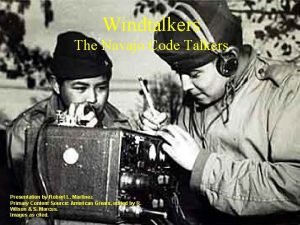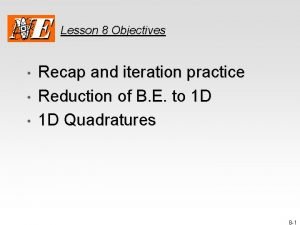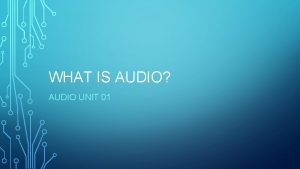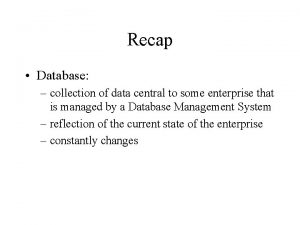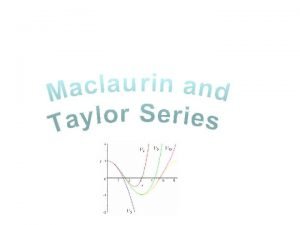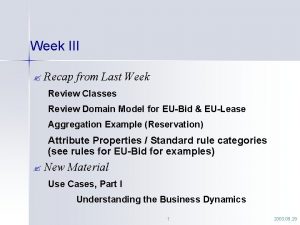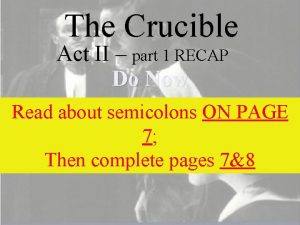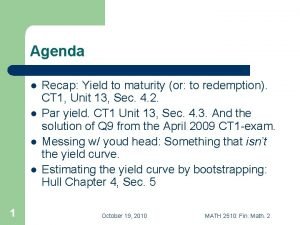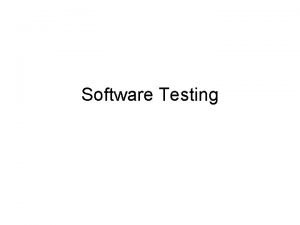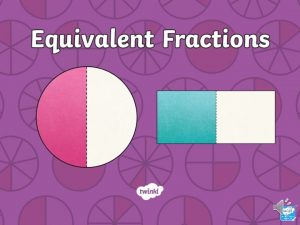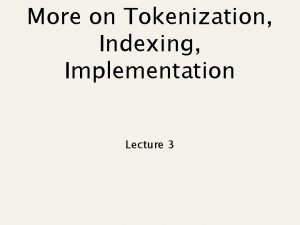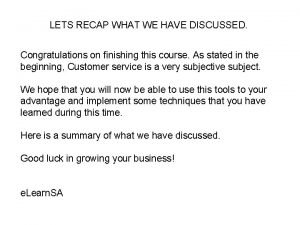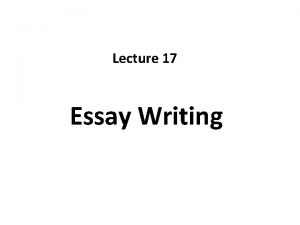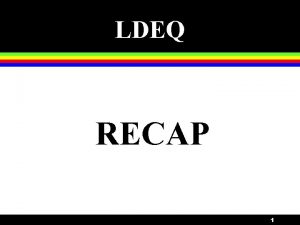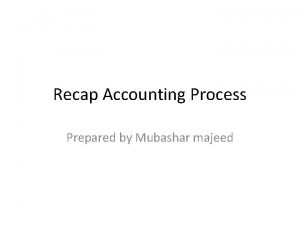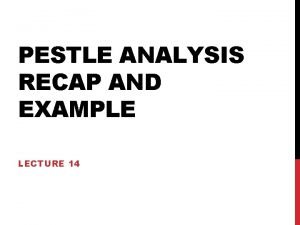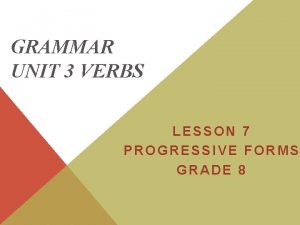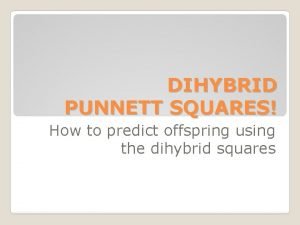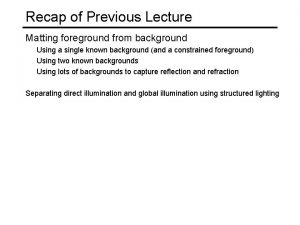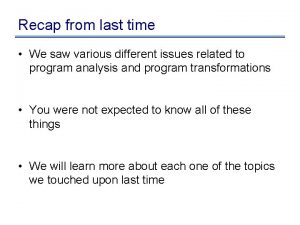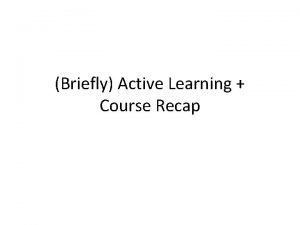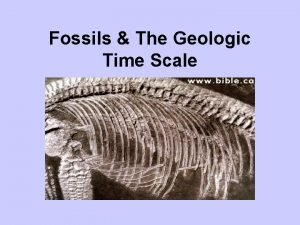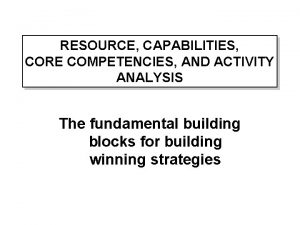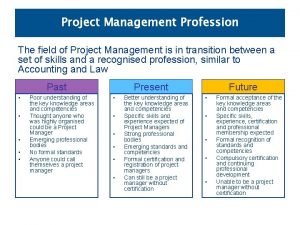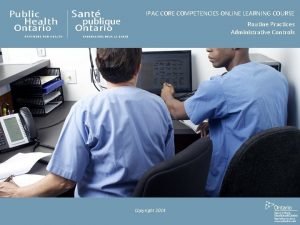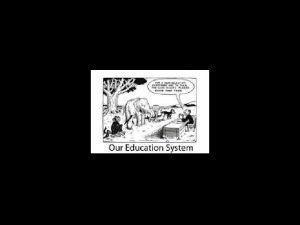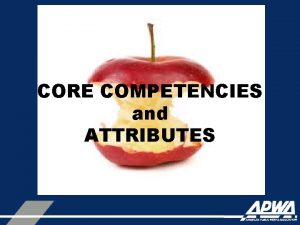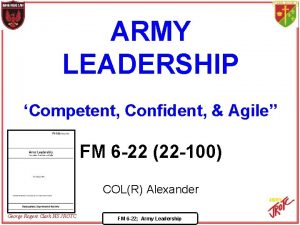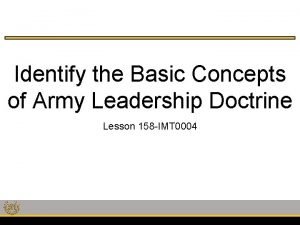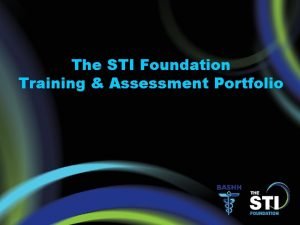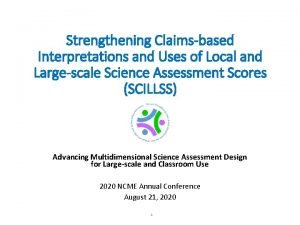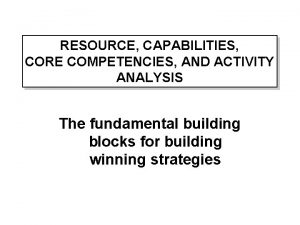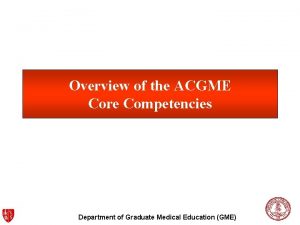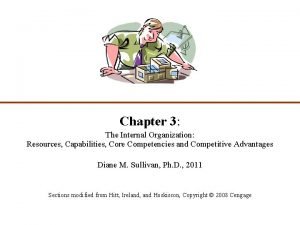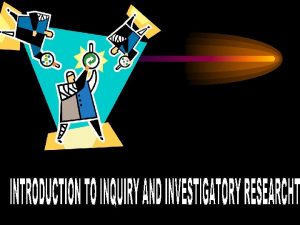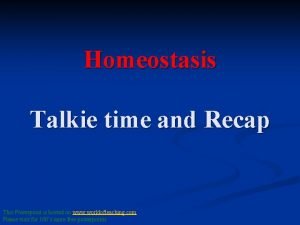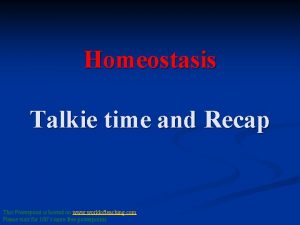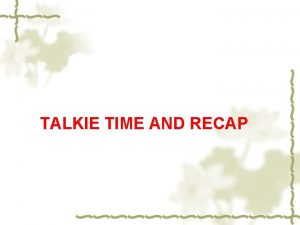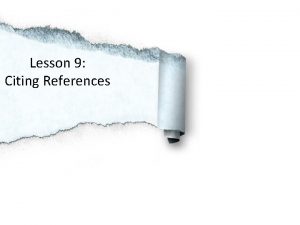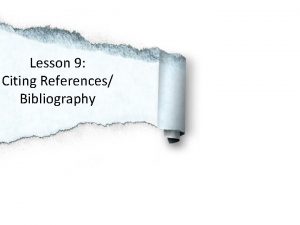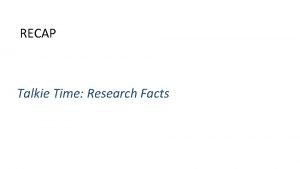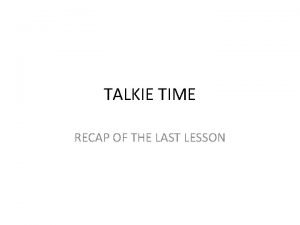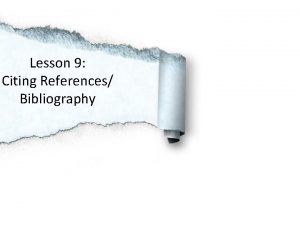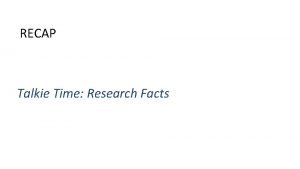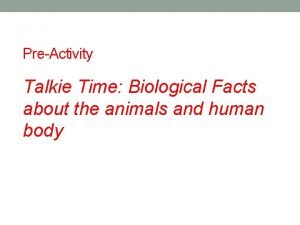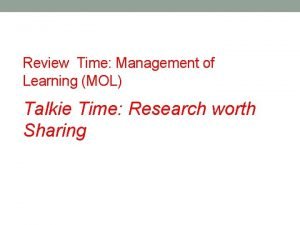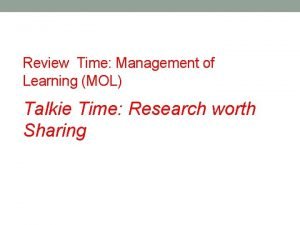Talkie Time and Recap Competencies Animals Process The

































































































































- Slides: 129

Talkie Time and Recap

Competencies: Animals Process: The SKELETAL SYSTEM_BIO 11/12 - IVa-h-1 • Give the functions of the bones • Describe the characteristics (composition) of the bones (types) • Identify the human bones of the body • Evaluate the Pathophysiology of bones

(15 mins) Film Viewing https: //www. youtube. com/watch? v=UPrx. Qkjj. Ex. I Buzz Session 1. What is the importance of Skeletal System? 2. What is it made of? Composition? 3. What disorders of bone that you know?

Anatomy of Skeletal System

SKELETAL SYSTEM • COMPOSED OF: -Bones -Cartilage -Joints -Ligaments

Functions of Skeletal System • SUPPORT: Hard framework that supports and anchors the soft organs of the body. • PROTECTION: Surrounds organs such as the brain and spinal cord. • MOVEMENT: Allows for muscle attachment therefore the bones are used as levers. • STORAGE: Minerals and lipids are stored within bone material. • BLOOD CELL FORMATION: The bone marrow is responsible for blood cell production.

Structure • Compact bone • Outer layer of bone, very hard and dense. • Organized in structural units called Haversian systems. • Matrix is composed of Ca salts (Ca carbonate and Ca phosphate) • Osteocytes – living bone cells that live in matrix. • Porous (Spongy) bone • Located in the ends of long bones. • Many spaces that are filled with red bone marrow which produces bone cells.

Structure • Spongy bone (cont’d) • Trabeculae – needle-like threads of spongy bone that surround the spaces. Add strength to this portion of the bone. • Cartilage • Matrix is a firm gel with chondrocytes suspended in the matrix.

Classification of Bones · Long bones · Typically longer than wide · Have a shaft with heads at both ends · Contain mostly compact bone • Examples: Femur, humerus Copyright © 2003 Pearson Education, Inc. publishing as Benjamin Cummings Slide 5. 4 a

Classification of Bones · Short bones · Generally cube-shape · Contain mostly spongy bone · Examples: Carpals, tarsals Copyright © 2003 Pearson Education, Inc. publishing as Benjamin Cummings Slide 5. 4 b

Classification of Bones on the Basis of Shape Figure 5. 1 Slide 5. 4 c

Classification of Bones · Flat bones · Thin and flattened · Usually curved · Thin layers of compact bone around a layer of spongy bone · Examples: Skull, ribs, sternum Copyright © 2003 Pearson Education, Inc. publishing as Benjamin Cummings Slide 5. 5 a

Classification of Bones · Irregular bones · Irregular shape · Do not fit into other bone classification categories · Example: Vertebrae and hip Copyright © 2003 Pearson Education, Inc. publishing as Benjamin Cummings Slide 5. 5 b

Microscopic Anatomy of Bone · Osteon (Haversian System) · A unit of bone · Central (Haversian) canal · Opening in the center of an osteon · Carries blood vessels and nerves · Perforating (Volkman’s) canal · Canal perpendicular to the central canal · Carries blood vessels and nerves Copyright © 2003 Pearson Education, Inc. publishing as Benjamin Cummings Slide 5. 10 a

Microscopic Anatomy of Bone · Lacunae · Cavities containing bone cells (osteocytes) · Arranged in coecentric rings · Lamellae · Rings around the central canal · Sites of lacunae Copyright © 2003 Pearson Education, Inc. publishing as Benjamin Cummings Figure 5. 3 Slide 5. 11 a

Microscopic Anatomy of Bone Figure 5. 3 Copyright © 2003 Pearson Education, Inc. publishing as Benjamin Cummings Slide 5. 10 b

Microscopic Anatomy of Bone · Canaliculi · Tiny canals · Radiate from the central canal to lacunae · Form a transport system Figure 5. 3 Copyright © 2003 Pearson Education, Inc. publishing as Benjamin Cummings Slide 5. 11 b

Changes in the Human Skeleton · In embryos, the skeleton is primarily hyaline cartilage · During development, much of this cartilage is replaced by bone · Cartilage remains in isolated areas · Bridge of the nose · Parts of ribs · Joints Copyright © 2003 Pearson Education, Inc. publishing as Benjamin Cummings Slide 5. 12

Bone Growth · Epiphyseal plates allow for growth of long bone during childhood · New cartilage is continuously formed · Older cartilage becomes ossified · Cartilage is broken down · Bone replaces cartilage Copyright © 2003 Pearson Education, Inc. publishing as Benjamin Cummings Slide 5. 13 a

Bone Growth · Bones are remodeled and lengthened until growth stops · Bones change shape by gravity &muscle pull · Bones grow in width through periostium Copyright © 2003 Pearson Education, Inc. publishing as Benjamin Cummings Slide 5. 13 b

Long Bone Formation and Growth Figure 5. 4 a Copyright © 2003 Pearson Education, Inc. publishing as Benjamin Cummings Slide 5. 14 a

Types of Bone Cells · Osteocytes · Mature bone cells · Osteoblasts · Bone-forming cells · Osteoclasts · Bone-destroying cells · Break down bone matrix for remodeling and release of calcium · Bone remodeling is a process by both osteoblasts and osteoclasts Copyright © 2003 Pearson Education, Inc. publishing as Benjamin Cummings Slide 5. 15

Fractures • Closed fracture (simple): skin is intact • Open fracture (compound): skin is open • Fracture reduction : 1 -closed reduction , no surgery is needed 2 -open reduction , surgery is needed

Repair of fracture • Healing time for simple fracture is 6 -8 weeks (longer in elderly people) • It occurs in FOUR major events • 1 -hematoma formation • 2 -fibrocartilage callus formation • 3 -bony callus formation • 4 -bone remodelling

Skeletal system includes A. Axial division • Skull and associated bones • Auditory ossicles • Hyoid bones • Vertebral column • Thoracic cage(Ribs+ sternum) B. Appendicular -Pectoral girdle -Pelvic girdle division

The Axial Skeleton • Axial division • Skull and associated bones: • Auditory ossicles • Hyoid bones • Vertebral column • Thoracic cage • Ribs + sternum

The Skull and Associated Bones


Sutures • Sutures – Immovable joints that join skull bones together • Form boundaries between skull bones • Four sutures: • Coronal – between parietal and frontal • Sagittal– between parietal bones • Lambdoid – between the parietal and occipital • Squamous – between the parietal and temporal ü Fontanels – usually ossify by 2 years of age

Sagittal Frontal (Coronal) Squamous Lambdoid Sutures

The Adult Skull • skull = 22 bones • cranium = 8 bones: frontal, occipital, 2 temporals, 2 parietals, sphenoid and ethmoid • facial bones = 14 bones: nasals, maxillae, zygomatics, mandible, lacrimals, palatines, inferior nasal conchae, vomer. • skull forms a larger cranial cavity -also forms the nasal cavity, the orbits, paranasal sinuses mandible and auditory ossicles are the only movable skull bones • cranial bones also: attach to membranes called meninges -stabilize positions of the brain, blood vessels -outer surface provides large areas for muscle attachment that move the head or provide facial expressions

Bones of the Cranium

Frontal View

Frontal View

Parietal Frontal View

Temporal Frontal View

Nasal Frontal View

Vomer Frontal View

Zygoma Frontal View

Maxilla Frontal View

Mandible Frontal View

Frontal Parietal Temporal Nasal Vomer Maxilla Zygoma Mandible Frontal View

Lateral View

Frontal Lateral View

Parietal Lateral View

Temporal Lateral View

Nasal Lateral View

Zygoma Lateral View

Maxilla Lateral View

Mandible Lateral View

Occipital Lateral View

Mastoid Process Lateral View

External Auditory Meatus Lateral View

Parietal Frontal Sphenoid Temporal Occipital Mastoid Process Nasal Zygoma Maxilla Mandible External Auditory Meatus Lateral View



Figure 6. 4 Sectional Anatomy of the Skull, Part I


14 Facial Bones Nasal (2) Mandible (1) Maxillae (2) Lacrimal (2) Inferior nasal conchae (2) Zygomatic (2) Palatine (2) Vomer (1)



The Vertebral Column http: //www. wisc-online. com/objects/index. asp? obj. ID=AP 12104

Adult Vertebral Column • 26 vertebrae • 24 individual vertebrae • Sacrum • Coccyx • • • Seven cervical vertebrae Twelve thoracic vertebrae Five lumbar vertebrae Sacrum and coccyx are Fused together.

Typical Vertebrae • Body • weight bearing • Vertebral arch • pedicles • laminae • Vertebral foramen • Seven processes • 2 transverse • 1 spinous • 4 articular

Typical Cervical Vert. (C 3 -C 7) • Smaller bodies • Larger spinal canal • 1 st and 2 nd cervical vertebrae are unique • atlas & axis

Thoracic Vertebrae T 1 -T 12) • All articulate with ribs • Have heart-shaped bodies • Each side of the body bears demifacets for articulation with ribs

Thoracic Vertebrae • Allows rotation and prevents flexion and extension

Lumbar Vertebrae • Bodies are thick and strong • Allows flexion and extension – rotation prevented

Sacrum (S 1 – S 5) • Forms the posterior wall of pelvis • Formed from 5 fused vertebrae • Superior surface articulates with L 5 • Inferiorly articulates with coccyx

Sacrum Figure 7. 18 a, b

Coccyx • Is the “tailbone” • Formed from 3 – 5 fused vertebrae • Offers only slight support to pelvic organs

Bony Thorax • Forms the framework of the chest • Components of the bony thorax • Thoracic vertebrae – posteriorly • Ribs – laterally • Sternum and costal cartilage – anteriorly • Protects thoracic organs • Supports shoulder girdle and upper limbs • Provides attachment sites for muscles

The Bony Thorax Figure 7. 19 a

Sternum • Formed from three parts : • Manubrium – superior part • Articulates with medial end of clavicles • Body – bulk of sternum • Sides are articulate for costal cartilage of ribs 2– 7 • Xiphoid process – inferior end of sternum • Ossifies around age 40

Ribs • All ribs attach to vertebral column posteriorly • True ribs - superior seven pairs of ribs • Attach to sternum by costal cartilage • False ribs – inferior five pairs of ribs , attach indirectly to the sternum • floating ribs anteriorly. ribs 11– 12 are short and free

Disorders of the Axial Skeleton • Abnormal spinal curvatures • Scoliosis – an abnormal lateral curvature • Kyphosis – an exaggerated thoracic curvature • Lordosis – an inward lumbar curvature – “swayback” • Stenosis of the lumbar spine • A narrowing of the vertebral canal


The Appendicular Skeleton • Allows us to move and manipulate objects • Includes all bones other than axial skeleton, it includes: • the limbs (upper & lower limbs) • the supportive girdles (pectoral &pelvic girdles)

Appendicular Figure 8– 1

What are the bones of the pectoral girdle, their functions, and features?

The Pectoral Girdle • Also called the shoulder girdle • Connects the arms to the body • Positions the shoulders • Provides a base for arm movement

The Pectoral Girdle Figure 8– 2 a

The Pectoral Girdle • Consists of: • 2 clavicles • 2 scapulae • Connects with the axial skeleton only at the manubrium(claviculosternal joint)

The Clavicles Figure 8– 2 b, c

The Clavicles • Also called collarbones • Long, S-shaped bones • Originate at the manubrium (sternal end) • Articulate with the scapulae (acromial end)

The Scapulae • Also called shoulder blades • Broad, flat and triangular • Articulate with arms and collarbone

Anatomy of The scapula Figure 8– 3 a

What are the bones of the upper limbs, their functions, and features?

The Upper Limbs • Arms, forearms, wrists, and hands Note: arm (brachium) = 1 bone, the humerus

ANATOMY OF The Humerus Figure 8– 4

The Humerus • Also called the arm • The long, upper armbone • Articulates with the pectoral girdle

The Forearm Figure 8– 5

The Forearm • Also called the antebrachium • Consists of 2 long bones: • ulna (medial) • radius (lateral)

The Wrist Figure 8– 6

The Wrist • 8 carpal bones: • 4 proximal carpal bones • 4 distal carpal bones • allow wrist to bend and twist

Metacarpal Bones • The 5 long bones of the hand • Numbered I–V from lateral (thumb) to medial • Articulate with proximal phalanges

Phalanges of the Hands • Thumb: • 2 phalanges (proximal, distal) • Fingers: • 3 phalanges (proximal, middle, distal)

What are the bones of the pelvic girdle, their functions, and features?

The Pelvis • Consists of 2 ossa coxae, the sacrum, and the coccyx • Stabilized by ligaments of pelvic girdle, sacrum, and lumbar vertebrae

The Pelvic Girdle Figure 8– 7

The OSSA COXAE • Also called hipbones • Strong to bear body weight &stress of movement • Each is made up of 3 fused bones: • ilium (articulates with sacrum) • ischium • pubis

The Acetabulum (vinegar cup) • Also called the hip socket • Is the meeting point of the ilium, ischium, and pubis • Articulates with head of the femur (Hip joint))

The Pelvis Figure 8– 8

Divisions of the Pelvis Figure 8– 9

What are the structural and functional differences between the male and female pelvis?

Comparing the Male and Female Pelvis • Female pelvis: • smoother • lighter • less prominent muscle and ligament attachments

Comparing the Male and Female Pelvis Figure 8– 10

Pelvis Modifications for Childbearing • Enlarged pelvic outlet • Broad pubic angle (> 100°) • Less curvature of sacrum and coccyx • Wide, circular pelvic inlet • Broad, low pelvis • Ilia project laterally, not upwards

What are the bones of the lower limbs, their functions, and features?

The Lower Limbs • Functions: • weight bearing • motion Note: leg = lower leg; thigh = upper leg

Bones of the Lower Limbs • Femur (thigh) • Patella (kneecap) • Tibia and fibula (leg) • Tarsals (ankle) • Metatarsals (foot) • Phalanges (toes)

The Femur (longest, heaviest ) Figure 8– 11

The Patella • Also called the kneecap • Formed within tendon of quadriceps femoris

The Tibia and Fibula Figure 8– 13

The Tibia • • Also called the shinbone Supports body weight Larger than fibula Medial to fibula The Fibula • Attaches muscles of feet and toes • Smaller than tibia • Lateral to tibia

Bones of the Ankle (Tarsals) • Talus: • Calcaneus (heel bone): • transfers weight to ground • attaches Achilles tendon

The Ankle • Also called the tarsus: • consists of 7 tarsal bones Figure 8– 14 a

Feet: Metatarsal Bones • 5 long bones of foot • Numbered I–V, medial to lateral • Articulate with toes

Toes: Phalanges • Phalanges: • bones of the toes • Hallux: • big toe, 2 phalanges (distal, proximal) • Other 4 toes: • 3 phalanges (distal, medial,

Articulations (Joints)

Function • Holds bones together • Allows bones to move • All bones articulate with at least one other bone except the hyoid.

Classification of joints • Functional classification: focuses on the amount of movement (synarthrosis, amphiarthrosis and diarthrosis) • Structural classification: based on whether Fibrous, Cartilage or a joint cavity separates the bony regions at the joint. • As a general rule, fibrous joints are immovable and synovial joints are freely movable.

Types • Synarthroses • No movements • Primarily axial skeleton • Bones connected with fibrous tissue ligament • Examples: Skull sutures and distal Tibia/Fibula

Types • Amphiarthroses • Slightly movable • Axial skeleton • Connected by cartilage • Intervertebral joints, pubic symphysis

Types • Diarthroses – freely movable • Also called synovial (fluid filled joint cavity) • Primarily found in the limbs • Plane of movement depends on the joint

Disorders of joints • Dislocation: Bone is forced out of its position, Reduction is done by experts only • Sprain: excessive stretch on a ligament • Arthritis: inflammation of joints, may be -Acute: usually bacterial -Chronic: Rheumatoid , Osteoarthritis and Gouty arthritis END of Sk. system

Bone cancer


Application: Tracing of Bones
 Mc millan research
Mc millan research Windtalker walkie talkie
Windtalker walkie talkie Consumer producer decomposer
Consumer producer decomposer Which energy
Which energy Animals that eat both plants and animals
Animals that eat both plants and animals Pee paragraph romeo and juliet
Pee paragraph romeo and juliet Kyle douglass
Kyle douglass Slidetodoc.com
Slidetodoc.com What is documentation portfolio
What is documentation portfolio Example of elapsed time
Example of elapsed time Shawshank redemption film study
Shawshank redemption film study Sparknotes great gatsby chapter 8
Sparknotes great gatsby chapter 8 Price is right recap
Price is right recap What is the purpose of an iteration recap
What is the purpose of an iteration recap Recap intensity clipping
Recap intensity clipping 60 minutes recap
60 minutes recap Recap database
Recap database Differentiation recap
Differentiation recap Introduction for recap
Introduction for recap Recap introduction
Recap introduction Recap from last week
Recap from last week The crucible act 1 short answer questions
The crucible act 1 short answer questions Ezekiel cheever motivation
Ezekiel cheever motivation Logbook recap example
Logbook recap example Ytm recap
Ytm recap Black box recap
Black box recap Fractions recap
Fractions recap Recap
Recap Without graphing identify the quadrant in which the point
Without graphing identify the quadrant in which the point Recap indexing scans
Recap indexing scans Just a quick recap of what we discussed
Just a quick recap of what we discussed Recap poster
Recap poster What is a essay
What is a essay Ldeq recap
Ldeq recap Recap accounting
Recap accounting Example of recap
Example of recap Let's recap
Let's recap Perfect lesson 7
Perfect lesson 7 Dihybrid punnett square foil
Dihybrid punnett square foil Recap background
Recap background Normative ethical questions
Normative ethical questions Saw recap
Saw recap Briefly recap
Briefly recap Geologic time scale animals
Geologic time scale animals Once upon a time the animals had a school
Once upon a time the animals had a school Hát kết hợp bộ gõ cơ thể
Hát kết hợp bộ gõ cơ thể Slidetodoc
Slidetodoc Bổ thể
Bổ thể Tỉ lệ cơ thể trẻ em
Tỉ lệ cơ thể trẻ em Gấu đi như thế nào
Gấu đi như thế nào Tư thế worm breton là gì
Tư thế worm breton là gì Chúa yêu trần thế alleluia
Chúa yêu trần thế alleluia Các môn thể thao bắt đầu bằng tiếng nhảy
Các môn thể thao bắt đầu bằng tiếng nhảy Thế nào là hệ số cao nhất
Thế nào là hệ số cao nhất Các châu lục và đại dương trên thế giới
Các châu lục và đại dương trên thế giới Cong thức tính động năng
Cong thức tính động năng Trời xanh đây là của chúng ta thể thơ
Trời xanh đây là của chúng ta thể thơ Mật thư tọa độ 5x5
Mật thư tọa độ 5x5 101012 bằng
101012 bằng Phản ứng thế ankan
Phản ứng thế ankan Các châu lục và đại dương trên thế giới
Các châu lục và đại dương trên thế giới Thơ thất ngôn tứ tuyệt đường luật
Thơ thất ngôn tứ tuyệt đường luật Quá trình desamine hóa có thể tạo ra
Quá trình desamine hóa có thể tạo ra Một số thể thơ truyền thống
Một số thể thơ truyền thống Cái miệng bé xinh thế chỉ nói điều hay thôi
Cái miệng bé xinh thế chỉ nói điều hay thôi Vẽ hình chiếu vuông góc của vật thể sau
Vẽ hình chiếu vuông góc của vật thể sau Thế nào là sự mỏi cơ
Thế nào là sự mỏi cơ đặc điểm cơ thể của người tối cổ
đặc điểm cơ thể của người tối cổ Thế nào là giọng cùng tên?
Thế nào là giọng cùng tên? Vẽ hình chiếu đứng bằng cạnh của vật thể
Vẽ hình chiếu đứng bằng cạnh của vật thể Fecboak
Fecboak Thẻ vin
Thẻ vin đại từ thay thế
đại từ thay thế điện thế nghỉ
điện thế nghỉ Tư thế ngồi viết
Tư thế ngồi viết Diễn thế sinh thái là
Diễn thế sinh thái là Các loại đột biến cấu trúc nhiễm sắc thể
Các loại đột biến cấu trúc nhiễm sắc thể Các số nguyên tố là gì
Các số nguyên tố là gì Tư thế ngồi viết
Tư thế ngồi viết Lời thề hippocrates
Lời thề hippocrates Thiếu nhi thế giới liên hoan
Thiếu nhi thế giới liên hoan ưu thế lai là gì
ưu thế lai là gì Sự nuôi và dạy con của hổ
Sự nuôi và dạy con của hổ Khi nào hổ mẹ dạy hổ con săn mồi
Khi nào hổ mẹ dạy hổ con săn mồi Sơ đồ cơ thể người
Sơ đồ cơ thể người Từ ngữ thể hiện lòng nhân hậu
Từ ngữ thể hiện lòng nhân hậu Thế nào là mạng điện lắp đặt kiểu nổi
Thế nào là mạng điện lắp đặt kiểu nổi Resources and competencies analysis
Resources and competencies analysis Pmo skills and competencies
Pmo skills and competencies Ipac core competencies
Ipac core competencies Group dynamics examples
Group dynamics examples Unit standards and competencies diagram
Unit standards and competencies diagram Community linkages
Community linkages Competencies and attributes
Competencies and attributes Army leadership styles 6-22
Army leadership styles 6-22 Qa competency matrix
Qa competency matrix Ppst career stages
Ppst career stages Leads develops achieves
Leads develops achieves Rama at sita
Rama at sita Unifrog competencies
Unifrog competencies Sti foundation
Sti foundation Lominger leadership architect
Lominger leadership architect Diversity competence
Diversity competence 5ps of unpacking competencies
5ps of unpacking competencies Myedhc
Myedhc Qsen competencies
Qsen competencies Qsen competencies safety examples
Qsen competencies safety examples Police sector council competencies
Police sector council competencies Pillars of academic advising
Pillars of academic advising Difference between entrepreneurs and managers
Difference between entrepreneurs and managers Acgme core competency
Acgme core competency Fnp core competencies
Fnp core competencies Aacc leadership competencies
Aacc leadership competencies Idoe sel toolkit
Idoe sel toolkit Ibm core competencies
Ibm core competencies Evaluator competencies
Evaluator competencies Profit oriented entrepreneurial competencies
Profit oriented entrepreneurial competencies Uwf social work
Uwf social work Compacancy
Compacancy Core competencies of a company examples
Core competencies of a company examples Capabilities vs core competencies
Capabilities vs core competencies Office competencies
Office competencies Blended competencies
Blended competencies Bsn vs adn patient outcomes
Bsn vs adn patient outcomes Star stroke competencies
Star stroke competencies Strategic management tools
Strategic management tools Qsen competencies
Qsen competencies Isfol competencies
Isfol competencies Qsen competency
Qsen competency Leadership competencies model
Leadership competencies model

